Dear Artist,
In Canada, doctors are prescribing museum visits with the cost of admission covered by universal healthcare. “We know that art stimulates neural activity,” says Montreal Museum of Fine Arts director general and chief curator, Nathalie Bondil. The program, piloted last year, is an extension of the museum’s work with their existing Art and Health Committee, where they participate in clinical trials studying the effects of art on people with eating disorders, cancer, epilepsy, mental illness, and Alzheimer’s disease. This “museum as hospital” idea also has legs for older people, the physically disabled and others with mobility issues. Because looking at art bumps cortisol and serotonin levels in the brain, it produces an effect in the body similar to exercise.
This past Wednesday, the British Medical Journal published a longitudinal study tracking the correlation between arts engagement and mortality. It turns out that hitting a museum just once or twice a year can lower your early death rate by 14%. Culture vultures fare even better at 31%. On top of this, studies from Denmark and Great Britain have found that hanging paintings — especially abstracts — in hospitals improves patient satisfaction, health outcome, length of stay and pain tolerance.
While experts hammer out what kind of art heals best, the big hospitals are hiring their own curators to test the notion of “hospital as museum.” “We set out to try and change the paradigm of what it’s like to be in a healthcare setting — that in some way, it might be inviting and enriching when you come to the hospital for whatever reason, whether you’re working there, a visitor, or a patient,” says Joanne Cohen, executive director and in-house curator at the Cleveland Clinic. And while some scholars fear that abstraction is too ambiguous for patients experiencing states of unfamiliarity, vulnerability and stress, Danish architecture and design professor Michael Mullins says that size and placement of work, colour, contrast, shapes and movement are factors just as important. While working on a recent project for a hospital in New York, the only request I received from the gallery was, “no green, no red.”
Sincerely,
Sara
PS: “I am convinced that in the 21st century, culture will be what physical activity was for health in the 20th century.” (Nathalie Bondil)
Esoterica: When I was about 20, the hospital in which I was born purchased some paintings for their palliative care floor. At the time, my work featured cloudless, gradated colour field skies, with kids floating and flying dreamlike above a thin strip of flat, white snow. For some time, I wondered if the paintings would be helpful or upsetting to those in hospital facing the end of life, especially when I seemed to be at the beginning of mine. Years later, I received a letter from someone who had spent many months with my paintings while saying goodbye to their loved one. Their words left me grateful and connected and honoured to be a part of such an important time. “Hopefully, it comforts.” (Joanne Cohen)
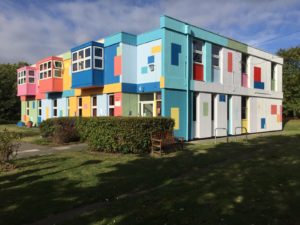
Recovery College (2016) in collaboration with Hospital Rooms and South West London and St George’s Mental Health NHS
by Tim A. Shaw (b. 1982)
The Letters: Vol. 1 and 2, narrated by Dave Genn, are available for download on Amazon, here. Proceeds of sales contribute to the production of The Painter’s Keys.
“Imagination is not a talent of some men, but is the health of every man.” (Ralph Waldo Emerson)
Featured Workshop
This workshop/retreat will be ideal for artists who are serious about improving their painting skills, but who also enjoy great food, terrific accommodations and a bit of adventure. The instructor has many years of experience in both teaching and painting and is dedicated to passing along her knowledge to those who are eager to learn. Small class size will insure individual attention. We will be working from life and previous experience mixing color will be necessary.
Casa Buena Art Retreat, between Puerto Vallarta and Mazatlan, is a calm and beautiful place to relax and explore your creative energy. Please check out their website for photos and detailed information about this exciting opportunity http://www.casabuenaartretreat.com/Retreat_LauraRobb.htm Non-painting travel companions are welcome too.
For more information on the instructor or to contact her, please visit http://LauraRobb.com
Featured Artist
My statement is pretty short. I love all kinds of paintings and I think Robert Genn is Canada’s finest painter. A great feature of his work are his designs — so beautifully conceived.

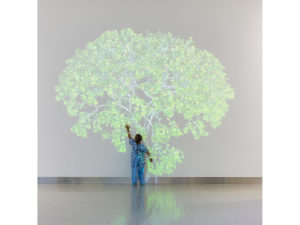
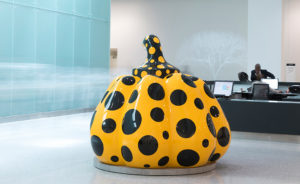
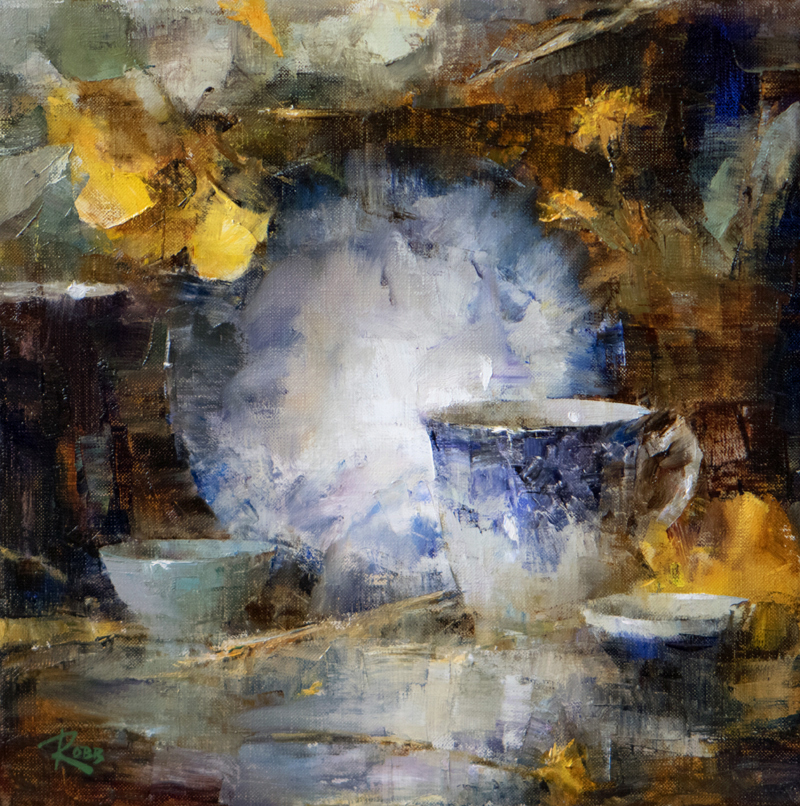
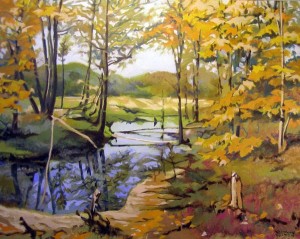
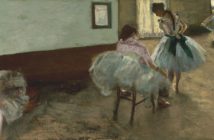
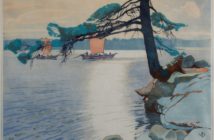

19 Comments
OH YES! I have been working on ART with our Autistic son for years, and his creativity is amazing. He is now 32 years old and engages in ART activities less frequently than he used to, but he still is able to capture the “essence” as only he can. I have always advocated for Art programs for people with “disabilities”, and I know of several such programs which are truly beneficial. The time necessary for the care of our son makes it impossible for me to diverge into marketing his work and continue with my own, but I hope to be able to share his ART on my web-site at some point. ART definitely heals….it’s why we are Artists! Art + Autism = Autists!
As a cancer survivor and artist I guess I am living proof of the above. University of Southern California Norris Cancer Center has created a new Institute of Arts in Medicine (IAM). IAM has been studying this important relationship with art and healing and I am honored and humbled to be a part of this.
I’ve been working with color since I started painting in 1992, knowing that it has profound power to positively impact our physiology. Color has a vibrational impact regardless of our awareness of it. It’s much the same as music, when we hear a passage that causes a visceral affect, a heaving in our solar plexus and tears to flow. I’ve had people tear up when viewing my paintings because it touches something inside them beyond their ability to articulate.
Thank you Sara.
I am an artist and residential designer. I have read several books on designing buildings with healing properties (there are many). It speaks to the ancient art of ‘Feng Shui’ which asserts the use of energy forces to harmonize individuals with their surrounding environment. In an nutshell an environment is some where between auspicious or it is inauspicious. Art is one of many components that can create spaces that aid in healing and generally improve well being.
Starting in the year 2000 we have had 4 art shows a year at our local hospital. I curated them until I retired in 2015 and my assistants have now taken over. Dozens, maybe hundreds of artists have had a chance to show their work over the years, hundreds more have come to the opening receptions; patients, their visitors, doctors, nurses, hospital staff, and ambulance drivers have all enjoyed being reminded of moments of beauty, truth, and joy even in times of sickness and sorrow.
Victoria Tierney/ Bandon-by-the-Sea, Oregon
I’m an artist and I couldn’t imagine a life w/o art. I learned to read when I was 5 years. My mother had many art books and I spent hours looking at them. I believe art was the medium that enabled humans to rise to such heights of mastery.
Thank you so much, Sara , for researching and sharing this vital topic of art and well being.
For 29 years I have run a full time art program for
Elders in long term care. They come to our designated large art studio from skilled nursing , memory care, assisted living and a locked alzheimers unit to work on art that grows from their own interests, curiosity and attraction to particular subjects ,media and techniques. As a result, over 400 pieces of Resident Art hang throughout the community.
Besides improving general awareness , concentration, eye hand coordination , and lessening pain, engaging in art-making increases autonomy, confidence , purpose, and self esteem. Conversations with staff, visitors, peers and family changes from “what’s wrong” to ” I am working on …”.
When conversations change, relationships change and when relationships with others change, relationship to self changes. There is no question
that art is a self healing blessing and elixir for suffering – physical, psychological and spiritual.
Betty Rothaus
Art Program Director / Artist in Residence
The Reutlinger Community
Betty, I would love to talk with you about your program. My mother is in an assisted living and is languishing – she is so creative, and there is no creative outlet for her.
Hi Cynthia
Please feel free to contact me at Betty.rothaus@gmail.com
When I was regularly (cancer treatments) going to The University of Wisconsin Carbonne Cancer Center), I would intentionally walk a certain route to visit certain art work: the comfort of beauty or serenity or different perspectives. Seventeen years later, *that* is what I remember.
While in treatment for AML in 1988 over a period of 7 months, existing in an isolation room, artist and art student friends at ECIAD regularly changed a mini gallery show in my room, one of the BMT nurses on the floor brought his paintings in to share with me and this made my experience one of joy and recovery. My mother brought in videos of Gilbert and Sullivan operettas, friends brought in art books, a violin to fool around with, good books to read. I am living proof of how the arts prolong and aid life, and thank everyone who keeps this practice going, everywhere!
Sorry, I’m not buying it. I love art and creating it, but when it comes to my health and fitness I’ll take a good workout at the gym and a long walk or hike anyday.
Life is rarely “either or”. Why not believe that you can do both the physical *and* the metaphysical?
The tree (it’s a projection video on the wall) shown in the photo above at the Cleveland Clinic was so soothing for me during the days we were there for my dad’s lung cancer surgery. I’d go downstairs and sit on a bench and watch it sway in the wind and change colors with the seasons. It felt as if I was being comforted, rocked like a baby…I am an artist and I loved seeing all the wonderful art as we walked through the hospital. But for me, at that particular time, this piece was such so comforting that I still imagine it when life gets hard.
Thank you for sharing your insights and experience. I did not understand that it swayed in the breeze. Lovely.
Art in hospitals is terrific for patients, doctors, nurses and visitors. The local hospital here in Auburn has an Art Can Heal program where local artists are contacted to hang there work in hospital corridors for three months at a time. A great program for artists and the hospital.
see this http://timepost.org
May I have premission to share this article in my artnewsletter, to be shared with my subscribers?
SusanKlabak.com
Pingback: Dr. Neil Greenberg » A&O – ART and HEALTH